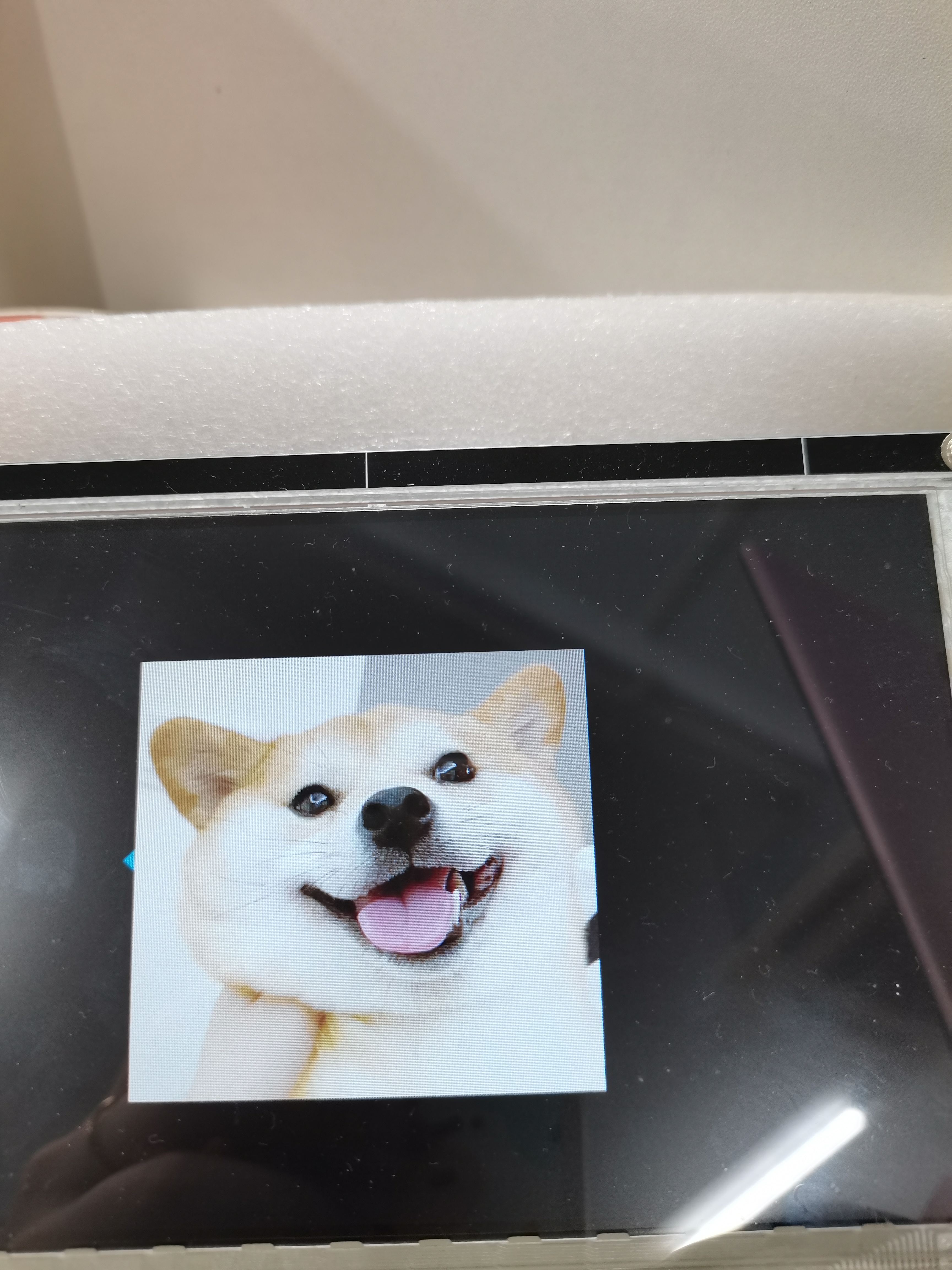在LCD上的任意位置显示一张任意大小的jpg图片
/*************************************************
*
* file name:lcdshowjpg.c
* author :momolyl@126.com
* date :2024/05/13
* brief :完成libjpeg库的移植,并设计程序实现在LCD上的任意位置显示一张任意大小的jpg图片,注意不要越界。
* note :None
*
* CopyRight (c) 2024 momolyl@126.com All Right Reseverd
*
**************************************************/
#include <stdio.h>
#include <stdlib.h>
#include <sys/types.h>
#include <sys/stat.h>
#include <fcntl.h>
#include <unistd.h>
#include <sys/mman.h>
/*
* Include file for users of JPEG library.
* You will need to have included system headers that define at least
* the typedefs FILE and size_t before you can include jpeglib.h.
* (stdio.h is sufficient on ANSI-conforming systems.)
* You may also wish to include "jerror.h".
*/
#include "include/jpeglib.h"
int *lcd_mp;
// 成功返回1 失败返回0
int read_JPEG_file(char *filename, int start_x, int start_y)
{
/* This struct contains the JPEG decompression parameters and pointers to
* working space (which is allocated as needed by the JPEG library).
*/
struct jpeg_decompress_struct cinfo;
/* We use our private extension JPEG error handler.
* Note that this struct must live as long as the main JPEG parameter
* struct, to avoid dangling-pointer problems.
*/
struct jpeg_error_mgr jerr;
/* More stuff */
FILE *infile; /* source file */
unsigned char *buffer; /* Output row buffer */
int row_stride; /* physical row width in output buffer */
/* In this example we want to open the input file before doing anything else,
* so that the setjmp() error recovery below can assume the file is open.
* VERY IMPORTANT: use "b" option to fopen() if you are on a machine that
* requires it in order to read binary files.
*/
if ((infile = fopen(filename, "rb")) == NULL)
{
fprintf(stderr, "can't open %s\n", filename);
return 0;
}
/* Step 1: allocate and initialize JPEG decompression object */
/* We set up the normal JPEG error routines, then override error_exit. */
cinfo.err = jpeg_std_error(&jerr);
/* Now we can initialize the JPEG decompression object. */
jpeg_create_decompress(&cinfo);
/* Step 2: specify data source (eg, a file) */
jpeg_stdio_src(&cinfo, infile);
/* Step 3: read file parameters with jpeg_read_header() */
(void)jpeg_read_header(&cinfo, TRUE);
/* We can ignore the return value from jpeg_read_header since
* (a) suspension is not possible with the stdio data source, and
* (b) we passed TRUE to reject a tables-only JPEG file as an error.
* See libjpeg.txt for more info.
*/
/* Step 4: set parameters for decompression */
/* In this example, we don't need to change any of the defaults set by
* jpeg_read_header(), so we do nothing here.
*/
/* Step 5: Start decompressor */
(void)jpeg_start_decompress(&cinfo);
/* We can ignore the return value since suspension is not possible
* with the stdio data source.
*/
/* We may need to do some setup of our own at this point before reading
* the data. After jpeg_start_decompress() we have the correct scaled
* output image dimensions available, as well as the output colormap
* if we asked for color quantization.
* In this example, we need to make an output work buffer of the right size.
*/
/* JSAMPLEs per row in output buffer */
row_stride = cinfo.output_width * cinfo.output_components; // 计算一行的大小
/* Make a one-row-high sample array that will go away when done with image */
buffer = calloc(1, row_stride);
/* Step 6: while (scan lines remain to be read) */
/* jpeg_read_scanlines(...); */
/* Here we use the library's state variable cinfo.output_scanline as the
* loop counter, so that we don't have to keep track ourselves.
*/
int data = 0;
while (cinfo.output_scanline < cinfo.output_height)
{
/* jpeg_read_scanlines expects an array of pointers to scanlines.
* Here the array is only one element long, but you could ask for
* more than one scanline at a time if that's more convenient.
*/
(void)jpeg_read_scanlines(&cinfo, &buffer, 1); // 从上到下,从左到右 RGB RGB RGB RGB
for (int i = 0; i < cinfo.output_width; ++i) // 012 345
{
data |= buffer[3 * i] << 16; // R
data |= buffer[3 * i + 1] << 8; // G
data |= buffer[3 * i + 2]; // B
// 把像素点写入到LCD的指定位置
lcd_mp[800 * start_y + start_x + 800 * (cinfo.output_scanline - 1) + i] = data;
data = 0;
}
}
/* Step 7: Finish decompression */
(void)jpeg_finish_decompress(&cinfo);
/* We can ignore the return value since suspension is not possible
* with the stdio data source.
*/
/* Step 8: Release JPEG decompression object */
/* This is an important step since it will release a good deal of memory. */
jpeg_destroy_decompress(&cinfo);
/* After finish_decompress, we can close the input file.
* Here we postpone it until after no more JPEG errors are possible,
* so as to simplify the setjmp error logic above. (Actually, I don't
* think that jpeg_destroy can do an error exit, but why assume anything...)
*/
fclose(infile);
/* At this point you may want to check to see whether any corrupt-data
* warnings occurred (test whether jerr.pub.num_warnings is nonzero).
*/
/* And we're done! */
return 1;
}
int main(int argc, char const *argv[])
{
// 1.打开LCD open
int lcd_fd = open("/dev/fb0", O_RDWR);
// 2.对LCD进行内存映射 mmap
lcd_mp = (int *)mmap(NULL, 800 * 480 * 4, PROT_READ | PROT_WRITE, MAP_SHARED, lcd_fd, 0);
// 3.显示一张jpg
read_JPEG_file("demo.jpg", 267, 100);
return 0;
}
运行结果:



 浙公网安备 33010602011771号
浙公网安备 33010602011771号